EATmosphere: How Your Simplistic Diet Affects the World Around You
“We do not inherit the earth from our ancestors, we borrow it from our children.” — Wendell Berry
Picture this: You sit down to enjoy a meal, savouring the flavours and textures. But beyond taste, have you ever thought about what’s really on your plate? Every bite you take has an invisible impact—shaping climates, transforming landscapes, and influencing ecosystems. Your simplistic diet doesn’t just nourish you; it plays a role in the health of the entire planet.
Food Choices Shaping The World
Our food choices shape the planet’s future in ways we may not always see. From carbon emissions to soil degradation, what we eat today has lasting effects on the world that future generations will inherit.
The Hidden Footprint of Your Food Choices

Food isn’t just about nourishment—it’s also a key player in environmental change. Agriculture alone accounts for 26% of global greenhouse gas emissions, with livestock production making up around 15% of that. From deforestation for farmland to the massive amounts of water and energy needed to grow, process, and transport food worldwide, the impact is bigger than we often realize.
The good news? Your choices matter. Instead of feeling overwhelmed by eco-anxiety, focus on small, mindful decisions that can make a real difference. Choosing sustainable foods, reducing waste, and supporting responsible farming practices all contribute to a healthier planet—one meal at a time.
Carbon on Your Plate: The Climate Cost of Food

Getting food from the farm to your plate takes a lot of energy, and some foods leave a much bigger carbon footprint than others. Meat—especially beef and lamb—has the highest impact. Producing just 1 kg of beef releases around 60 kg of CO2 emissions, while lentils produce only 2.5 kg, and apples just 0.9 kg.
Food transportation adds to the problem. Imported goods, particularly those flown in, have a much larger carbon footprint than locally grown foods. Choosing seasonal, locally sourced produce isn’t just better for the planet—it’s often fresher, more nutritious, and supports local farmers too.
The Water Factor: Eating Wisely to Conserve a Precious Resource
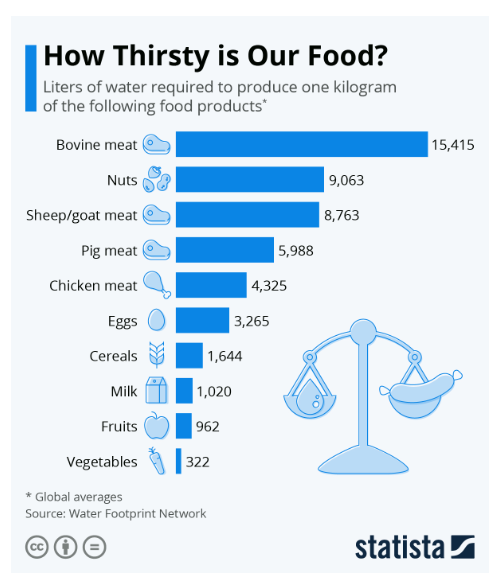
Food production consumes an enormous amount of water—something we often don’t think about when we eat. For example, producing just one kilogram of beef takes over 15,000 liters of water, while the same amount of wheat needs only about 1,500 liters. By reducing our intake of water-intensive foods or simply being more mindful of how often we consume them, we can help ease the strain on our water supply.
Food waste is another major issue. Every time we throw food away, we’re also wasting the water and resources used to produce it. If food waste were a country, it would be the third-largest emitter of greenhouse gases, right after the US and China. Small changes—like planning meals, storing food properly, and making the most of leftovers—can go a long way in reducing waste and conserving water.
Soil Health and Biodiversity
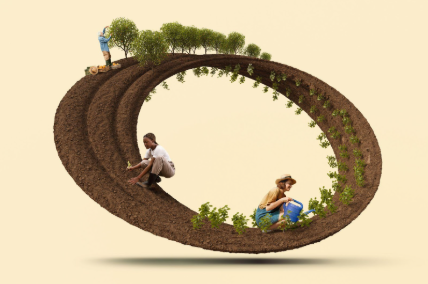
Industrial farming has taken a toll on soil health, with one of the biggest culprits being intense monocropping—repeatedly growing the same crop on the same land. This practice depletes essential nutrients and has already degraded 33% of the world’s soil. Since countless organisms depend on fertile soil, this not only reduces food production but also threatens biodiversity.
Regenerative agriculture offers a solution. By using methods like crop rotation, composting, and reduced tilling, it helps restore soil health, boost biodiversity, and even capture and store carbon. Supporting organic and sustainably grown products helps drive these efforts, protecting the very land that feeds us.
Plastic Pollution and Packaging
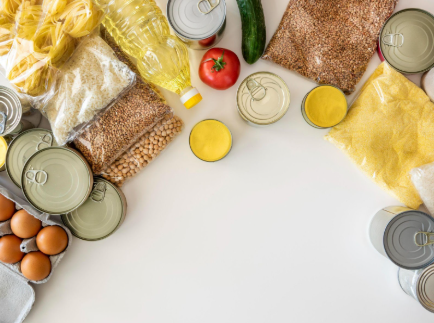
What we eat matters, but so does how it’s packaged. Single-use plastics from grocery stores often end up polluting landfills and oceans, harming marine life and disrupting ecosystems. One simple way to cut down on plastic waste is by choosing products with minimal packaging, bringing reusable bags, and supporting brands that use biodegradable or compostable materials.
Buying in bulk is another great way to reduce waste, and local farmer’s markets or zero-waste stores often have eco-friendly alternatives. Small changes like these can add up, making a big difference for the planet.
Supporting Ethical and Sustainable Farming

Every time we buy food, we’re making a statement about the kind of food system we want to support. Choosing ethical brands, sustainable farms, and fair-trade products helps ensure that food is grown and produced in a way that respects both the planet and the people behind it.
Take sustainable fishing, for example—it plays a crucial role in keeping ocean ecosystems balanced by preventing overfishing. By reading labels, researching brands, and making informed decisions, we can push industries toward better standards. The more people choose ethical and sustainable options, the more businesses will adapt to meet those demands.
Eating for a Greener Tomorrow: Small Shifts, Big Impact
Switching to a sustainable diet doesn’t mean giving up the foods you love—it’s all about balance and mindful choices. Here’s how you can make a real impact:
Go Plant-Forward, Not Plant-Only

You don’t have to go fully vegan to make a positive impact. Simply cutting back on meat and opting for plant-based meals a few times a week can significantly shrink your carbon footprint. Even small changes—like embracing a “Meatless Monday”—can add up to a big difference for the planet!
Eat Seasonally for Better Taste and a Lighter Footprint

Eating seasonal produce isn’t just better for flavour and quality—it’s also a win for the environment and local farmers. Since seasonal fruits and vegetables grow naturally with fewer pesticides and less water, they’re a more sustainable choice. Plus, they’re packed with nutrients and often more affordable, making them a smart and delicious way to eat.
Not sure what’s in season? Check out this guide to explore India’s seasonal fruits and their benefits.
Waste Not, Want Not
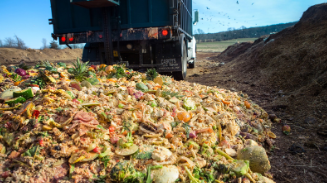
Globally, a staggering 1.3 billion tonnes of food go to waste every year. But with a little planning, smart storage, and creative use of leftovers, you can cut down on waste and reduce your environmental footprint—one meal at a time.
Take a look at initiatives like Feeding India by Zomato, which helps curb food waste by redirecting surplus food from restaurants, events, and individuals to those who need it most. Instead of ending up in landfills, perfectly good food finds its way to people facing hunger, making a real difference in the process.
Support Regenerative Agriculture
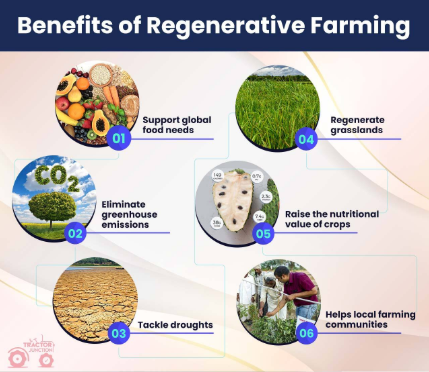
Choosing products from regenerative farms does more than just support local agriculture—it helps protect biodiversity, conserve water, and keep soil healthy for future generations. When shopping, look for labels like “biodynamic,” “organic,” or “regeneratively farmed” to make a positive impact with every purchase.
Read more about regenerative farming and how it can heal the planet.
Choose Eco-Friendly Food Packaging and Storage
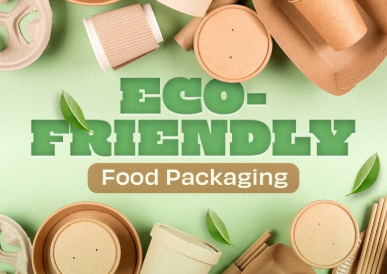
It’s not just about what we eat—it’s also about how our food is stored and packaged. Choosing glass or stainless steel containers, reusable cloth bags, and biodegradable packaging can cut down on waste in a big way.
Want to take your sustainable lifestyle beyond food storage? There are plenty of small changes that make a big impact. Let’s build a greener future, one choice at a time!
Check out Brown Living for eco-friendly kitchenware, personal care items, home essentials, and more.
Your Plate, Your Power
Every time you eat, you’re making a choice—not just for yourself, but for the world around you. The food you pick fuels your body, but it also shapes the future of the planet. The good news? Eating responsibly doesn’t mean giving up the flavours and meals you love. Even small changes in your diet can make a big difference, helping create a healthier, more sustainable world—one delicious bite at a time.
At Green Pistachio, we believe that the way we eat shapes the world we live in. Choosing fresh, sustainable food isn’t just about health—it’s about creating a better future for our planet.
Want to make a difference? Explore eco-friendly choices at greenpistachio.in. And remember, small steps add up! Share your journey with us and inspire others to join the movement, one meal at a time.
Author: Garima Jain
Resources
- Greenhouse Gas Emissions from Food Production – Our World in Data: https://ourworldindata.org/food-emissions
- Water Usage in Food Production – The Water Footprint Network: https://waterfootprint.org/en/
- Soil Degradation Statistics – Food and Agriculture Organization (FAO): https://www.fao.org/soils-portal/
- Food Waste Impact – United Nations Environment Programme (UNEP): https://www.unep.org/resources/report/unep-food-waste-index-report-2021
- Regenerative Agriculture – Regeneration International: https://regenerationinternational.org/
- Sustainable Seafood – Seafood Watch: https://www.seafoodwatch.org/
- Feeding India by Zomato – https://www.feedingindia.org/
Brown Living – https://brownliving.in/
Images:
https://www.freepik.com/ https://pexels.com/ and other sources are mentioned in the images itself.





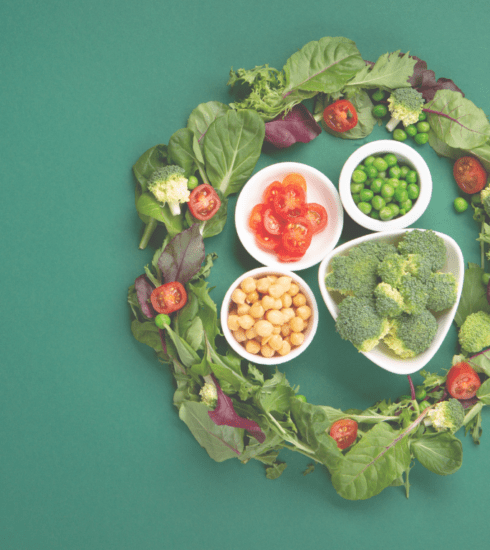

22 Comments
Ankur
8 months agoBeautifully crafted piece, learnt a lot.
Bhavya jain
7 months agoLearnt a lot
Prithvi Prasad
8 months agoOh wow, a conversation we must have. What a great note on sustainability and eco friendly policies and living. The author did a real good job!
Pussy Cat
8 months agoGood job. Based on how the world is transecting, making a better choice for today to have a better tomorrow is ideal.
Apoorva Srivastava
8 months agoInsightful!
Ananya
8 months agoSo good
Kenisha
8 months agoI never really thought about this before, but this actually makes a lot of sense. Crazy how a simple diet can have such a big impact. Glad I read this! Nice job 🙂
Norris
8 months agoVery interesting topic. New perspective
Sudhanva
8 months agoI will try my best to inculcate these steps in my routine.
shreyanshi palrecha
8 months agogreat job!
Pooja
8 months agoThis is great read . Loved the insights of this
Sukrutha
8 months agoGood one!💚
Aryan
8 months agoSo Beautifully Explained
Siddhi
8 months agoSo insightful!
San
8 months agoVery informative!
Abhinav
8 months agoReally Helpfull
Vishal Jain
8 months agoThis is such an insightful read, Loved how you connected our daily food choices to their larger impact on the environment. It’s a great reminder that simplicity in our diet can lead to sustainability for the planet. Your writing makes these complex ideas feel so accessible—definitely a must-read for anyone looking to make mindful changes. Keep sharing such valuable perspectives!
Abhinav
8 months agoReally Helpful
Rishita
8 months agoVery well written! Must read
Parv
8 months agoReally interesting and it makes sense how you talked about our eating habits affecting global emissions in such a significant way
Mitushi mehta Mehta
7 months agoVery important topic! Happy to read this 🙌
Protein Shift Challenge: Better Choices For A Brighter Future - Green Pistachio
6 months ago[…] So, why not give it a go? Ease into the protein shift and see how your diet affects the world around you. […]